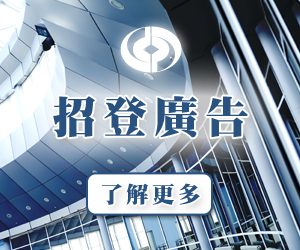Dr Charles YEUNG (Chairman of the 48th, 49th terms of office) April 2015
At the “Two Sessions” concluded last month, a number of strategic plans were put forward with a view to promoting China’s comprehensive, in-depth development. These plans will present Hong Kong with a lot of opportunities for development over the long run. Premier Li Keqiang has stressed that the Central Government will continue to support Hong Kong in playing a special role in China’s reform, opening up and modernization. At this year’s CPPCC National Committee meeting, I shared my views on how to make good use of Hong Kong’s unique strengths in finance, professional services and innovation to facilitate its participation in the country’s strategic development.
Supporting “One Belt and One Road” Strategy
As the Central Government has been striving to enhance the country’s external economic ties in recent years, the “One Belt and One Road” strategic plan has become a focus of this year’s “Two Sessions”. I believe Hong Kong should consider actively supporting the building of “One Belt and One Road” in the context of China’s “13th Five-Year” Plan. In this regard, Hong Kong should capitalize on its traditional strengths in financial and professional services to provide important financing channels and offshore asset management services for Mainland enterprises’ global expansion. Moreover, Hong Kong enterprises’ experience in foreign investment and business operation in Southeast Asia can be used to offer necessary information matching support to Mainland enterprises.
Furthermore, the HKSAR Government can strive to set up a regional operation and management center for Silk Road funds in Hong Kong. With Hong Kong’s experience in investment, financing and asset management, the Silk Road funds can make efficient investment and financing arrangements for infrastructure construction, resource development and financial and industry cooperation in the regions along the “One Belt and One Road”.
Realizing Service Trade Liberalization
Apart from forging closer external economic ties, China is also actively building free trade zones, laying a solid foundation for the full liberalization of trade in services. The Guangdong Free Trade Zone (FTZ), which covers China’s three innovation districts of Nansha, Qianhai and Hengqin, focuses on partnership between Guangdong, Hong Kong and Macau in pursuing innovation. In my view, Hong Kong can actively support the building of the Guangdong FTZ and, in particular, strengthen its ties with the above three new economic districts. Consideration can be given to how some service sectors can be gradually open up to Hong Kong on a pilot basis. The implementation of the “negative list” for services sectors can be expedited with its scope expanded and relevant procedures simplified. The restrictions on Hong Kong investors in terms of asset requirements, shareholding ratios, establishment procedures and business scope can be relaxed so that they can be subject to equal conditions for competition as those for Mainland investors, or even enjoy “national treatment”. All these can provide broader horizons for the expansion of Hong Kong services and then, based on the experience accumulated, be gradually extended to the whole Guangdong Province and other Mainland provinces and cities.
Promoting Cooperation in High Value-added and Innovation Sectors
Meanwhile, to tie in with the high value-added and innovative development of the Chinese economy, Hong Kong should devote more resources to the development of creative and innovative technology industries, as well as to the nurturing of scientific research talents. By better using its comparative advantages in systems, Hong Kong can gradually promote mutual recognition with the Mainland on patent examination systems and facilitate the establishment of an intellectual property management and trading platform in the city itself. The relevant Mainland and HKSAR government departments can also strengthen coordination to encourage more Mainland enterprises to set up R&D centers in Hong Kong and assist enterprises from both places in tapping overseas markets through the city, creating favorable conditions for the high value-added industries in both places to grow.
2015 is a crucial year for China’s deepening of reforms. A thriving Chinese economy will provide fresh vitality for Hong Kong’s economic growth. Hong Kong has to make better use of its unique strengths to further its cooperation with the Mainland in the context of the “One Country, Two Systems”. It should take part in China’s formulation of long-term plans with an innovation mind and maximize its role as a “super-connector”. This is how the city can fit itself into China’s rapid development while making contribution to the country’s further comprehensive reforms.




